TWENTY YEARS AGO TODAY: COMPLETE TEST OF THE 2003 HONDA CR125
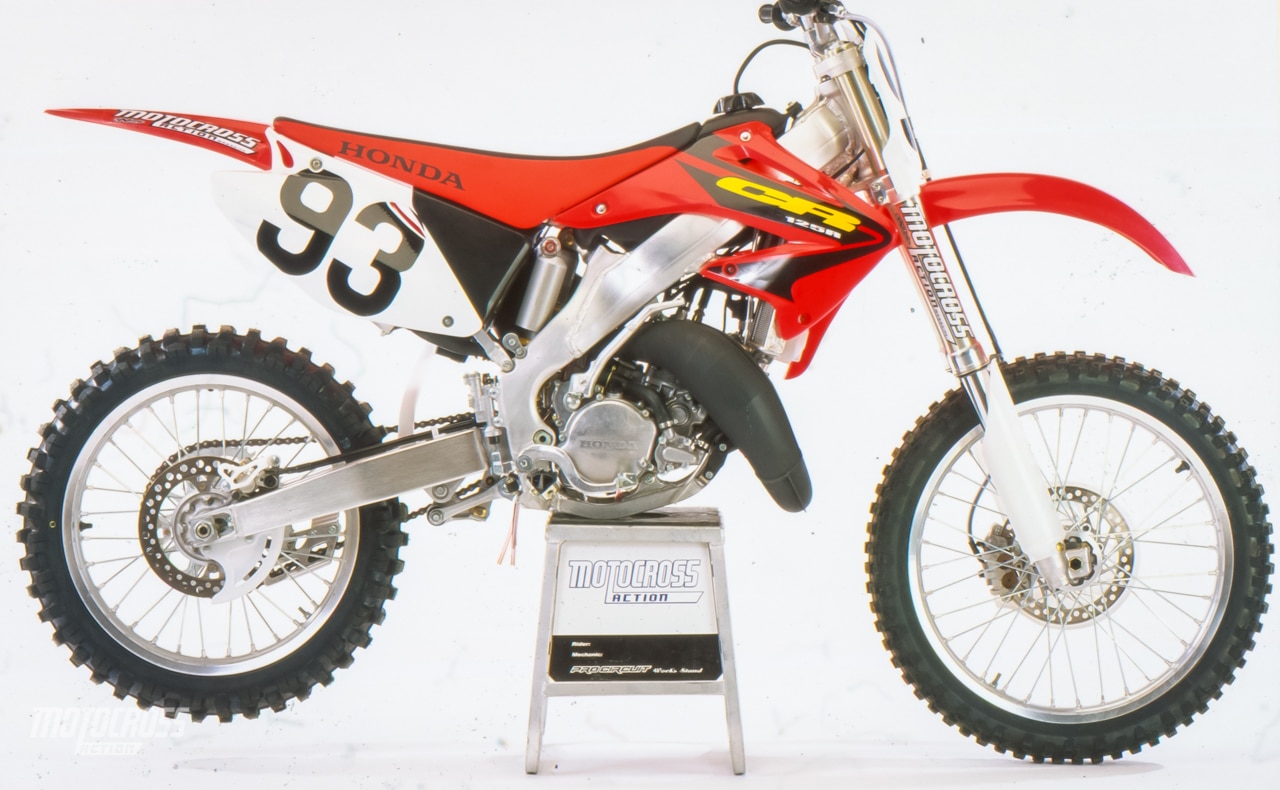 This is an archived 2003 Honda CR125 MXA test from the December 2003 issue of Motocross Action Magazine. Get your MXA subscription today.
This is an archived 2003 Honda CR125 MXA test from the December 2003 issue of Motocross Action Magazine. Get your MXA subscription today.
MXA GIVES YOU THE COMPLETE TEST OF THE 2003 HONDA CR125
The 125 class has been a broken record since 1996. It plays like this, “Yamaha, Yamaha, Yamaha, Yamaha, Yamaha, Yamaha, Yamaha.” But, many people forget that before Yamaha came on the scene, the 125 class was ruled with an iron fist by the Honda CR125. Oh, don’t get us wrong, the CR125 didn’t win every 125 shootout, but when it came to high revving, hard hitting horsepower, the Honda stood alone. The CR125 of the late ’80s and early ’90s had midrange to die for and unbelievable over-rev.
The 2003 Honda CR125 still has unbelievable over-rev, but it’s not as much of a compliment as it was in the pre-YZ125 era. Yamaha’s mini-250 powerband, with bottom, mid and top, changed the way people looked at 125 powerbands. Honda’s engine is still living in the past.
But the rest of the frame is straight out of a Buck Rogers episode. It’s space age in the best sense of the phrase. It wouldn’t be wrong for the Honda CR125 to hang in the museum of Arts and Sciences. It’s the epitome of technological advancement — except for one vintage component…the engine.
QUESTION ONE: IS THE 2003 CR125 FASTER THAN THE 2002?
You bet it is. No contest. Why? Because the 2002 CR125 was a dog. It was fast enough to be competitive in the Beginner class, but above that level the competition’s machinery had more of everything (especially Yamaha and KTM).
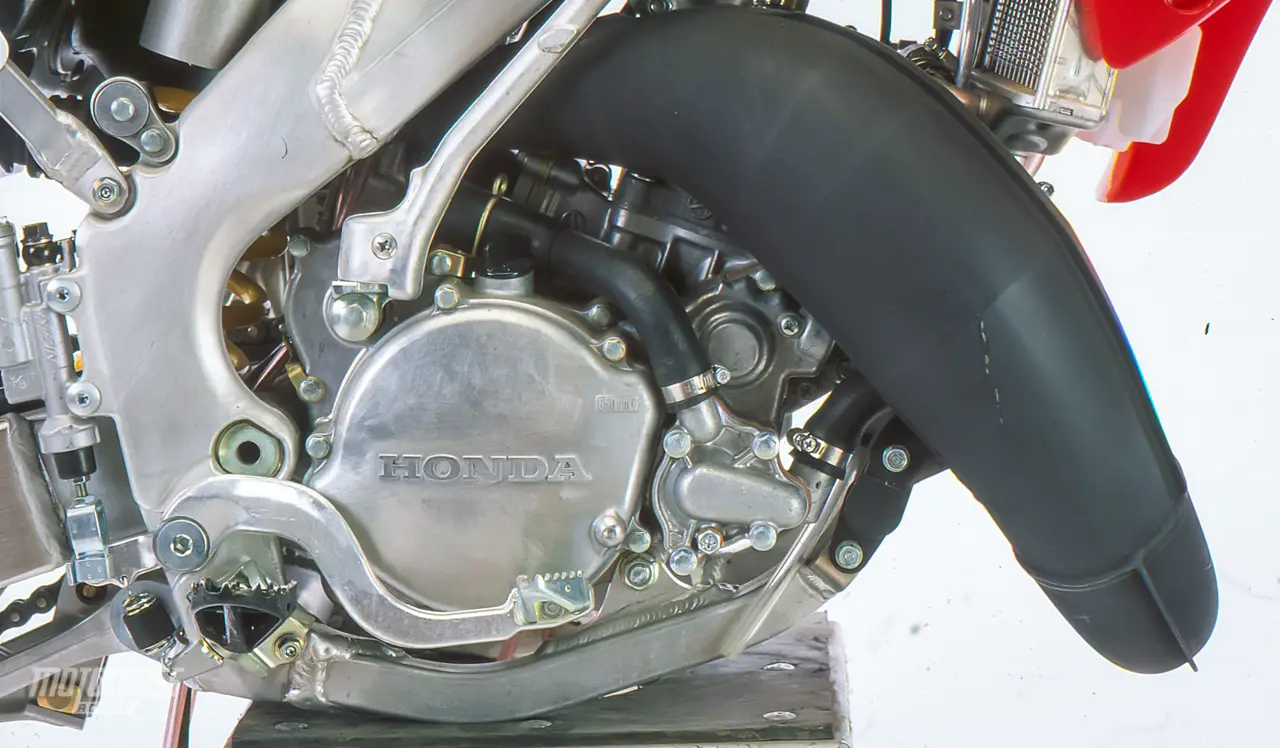 The good news? The 2003 CR125 is considerably faster than in 2002. The bad news? It’s not pro-level fast.
The good news? The 2003 CR125 is considerably faster than in 2002. The bad news? It’s not pro-level fast.
QUESTION TWO: WHAT HAPPENED TO GREAT ENGINES OF OLD?
We’ve been wondering the same thing ourselves. In truth, Honda lost its way during the big YZ125 powerband shift (1996-2002). Honda abandoned the top-end powerbands of the ’80s in an attempt to jump on the YZ125’s midrange bandwagon. Unfortunately, Honda’s engineers, restricted by budget constraints, tried to do it with their old engine castings. That was asking too much out of the venerable CR125 warhorse — its roots go back more than a decade.
But, Honda’s R&D department never gave up. They reconfigured the cylinder, applied Band-Aids to the ignition, moved the powerband around and kept plugging away. For 2003, Honda was so serious about fixing the CR125 engine that they held the bike back from its traditional release date in hopes of finding the magic elixir before the final drop-dead deadline. We’re glad they took the extra time, because we can’t imagine how slow the bike would have been if they had released it on its appointed date.
QUESTION THREE: IS THE HONDA CR125 A STALKING HORSE?
There are those who claim that the Honda CR125 is just passing time until next year’s CRF250 four-stroke is ready. They believe that the reason Honda hasn’t invested in the brand-new 125 two-stroke engine that the excellent CR125 chassis cries out for is because the four-stroke will replace it. We don’t think so. We expect Honda to unleash a totally new two-stroke engine in 2004. It should end our sniveling.
QUESTION FOUR: WHAT ABOUT THE REST OF THE BIKE?
The rest of the 2003 Honda CR125 borders on phenomenal. Ever since the release of their third generation aluminum frame in 2001, MXA test rider complaints about the overly rigid chassis have lessened. The CR125 is responsive, plush and more comfortable than the CR250 frame. The components are all top notch and Honda’s famed reliability hasn’t slipped in the slightest. We love the fit, feel and sensations of this bike.
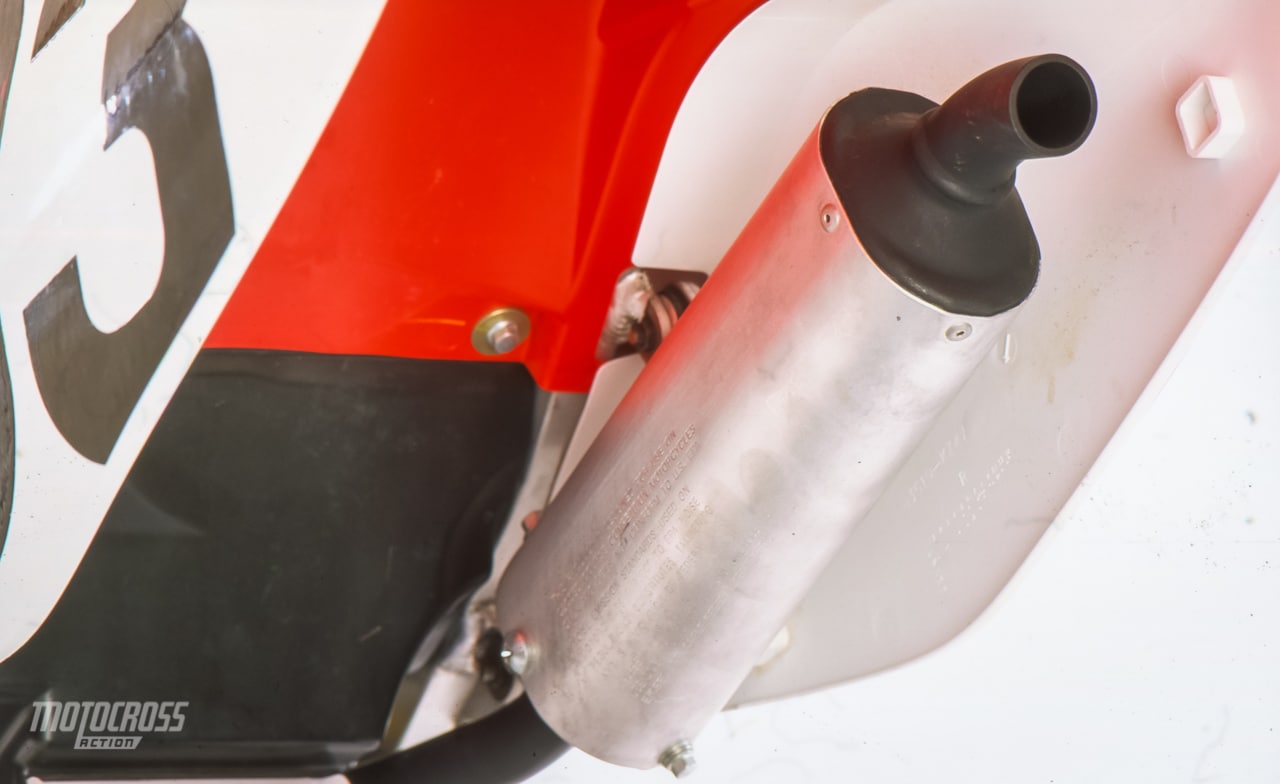
QUESTION FIVE: HOW GOOD IS THE CR125 SUSPENSION?
For years Honda was in a suspension slump. All through the ’80s they had the best engines on the planet and the worst suspension. Things have flip-flopped. The 2003 Honda CR125 comes from the factory with suspension settings that are close to perfect for the real world environment. Pros will like how stiff and resistant to bottoming the forks are, while amateurs will appreciate their ability to absorb the bumps.
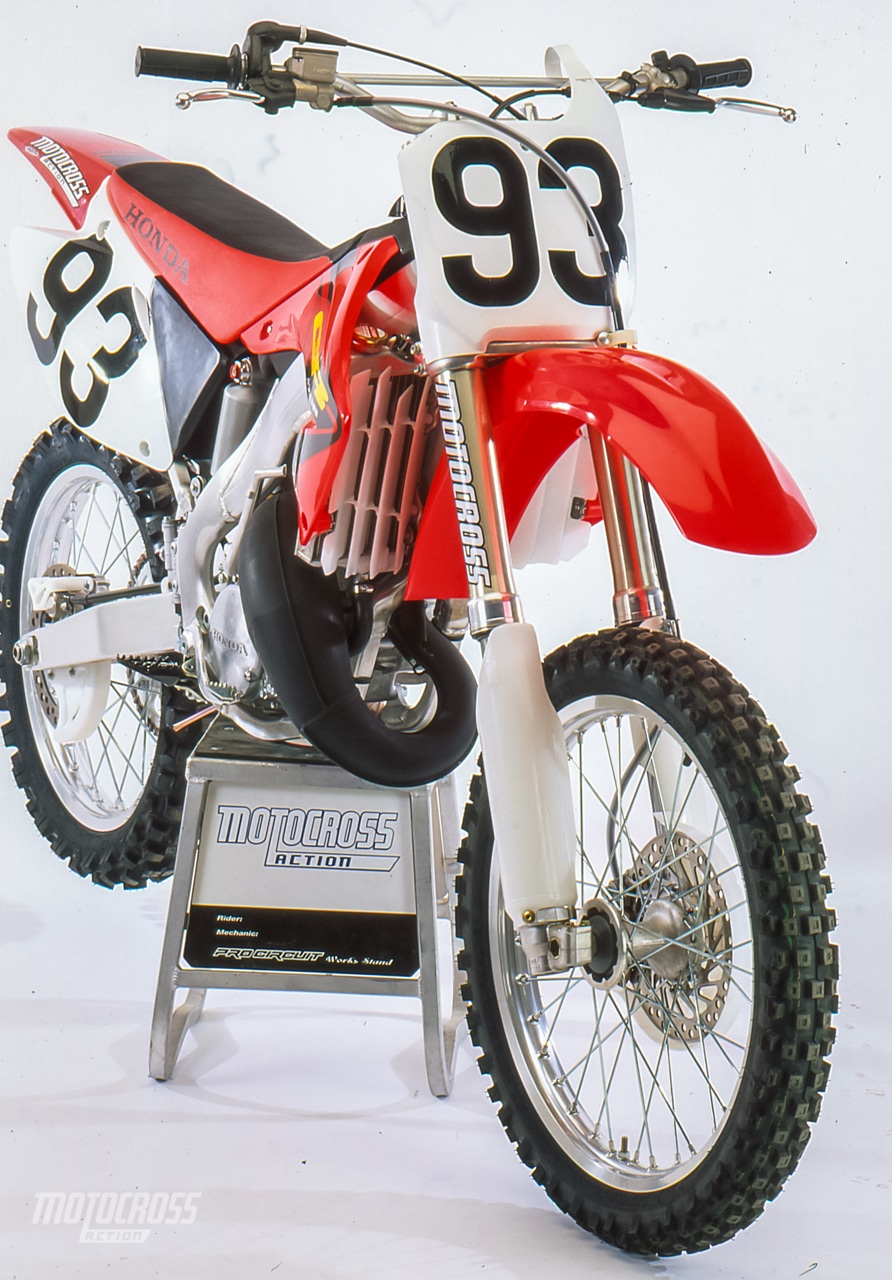
Forks: Honda has worked some kind of magic on the CR125’s front forks. No other production forks could handle the wide range of demands we placed on them (other than the YZ250F forks). Small bumps disappear, big bumps are absorbed with ease and hard landings are pain free. These are truly the best forks we’ve seen on a stock 125.
Shock: Honda recommends that you run 103mm of sag. We prefer to run the standard 100mm of sag. With 103mm the rear felt too low (which caused the front end to push in turns). In addition to the sag, we turned the compression clicker in to 8 from the stock setting of 12 out. This helped the rear stay up over acceleration bumps. The shock isn’t as good as the forks.
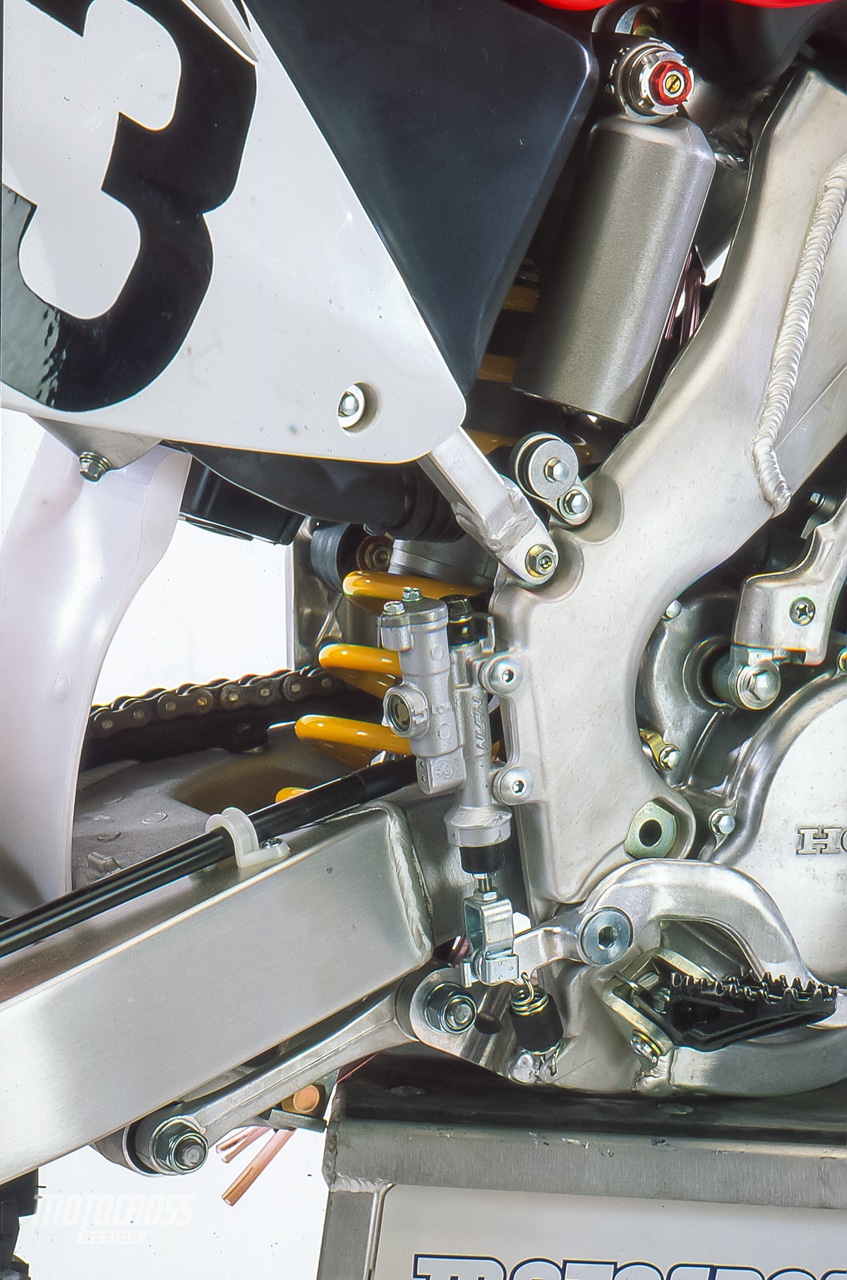
The CR125 is race-ready off the showroom floor for everything but the overly stiff demands of Supercross. It’s a buy-it, ride-it, love-it suspension system. Your best bet is to check sag and go ride. Once the suspension breaks in, stiffen up the shock and have fun.
QUESTION SIX: WHAT ABOUT THE WEIGHT?
Honda made light weight a mission, and no where is it more apparent than on the CR125. The CR125 is six pounds lighter than its nearest competitor, and that is very noticeable, both on the track and in the pits. In motion, it feels like you can pick the CR125 up and place it any where you want it. If you don’t like the outside line, lift the front wheel and stick it on the inside — it’s that effortless. In the air, the Honda is almost weightless. When it comes time to put it on the stand, don’t fret, it practically jumps up by itself.
QUESTION SEVEN: WHAT ABOUT THE CRF250?
Honda is still working on the CRF250 prototype. The new four-stroke will reportedly be a 2004 model — and the soonest anyone will see the proto race is this winter’s Japanese races or the 2003 125 Supercross class.

QUESTION EIGHT: WHAT DID WE HATE?
The hate list:
(1) The grips: Honda used to have the best grips on the market. Now, the diamond shape on top rips your hand apart, and they use so little glue that the grips will start rotating in no time.
(2) Engine: It’s embarrassing that Honda can make a bike this good and then stick a Model T engine in it.
(3) Rear brake: For brake draggers, the rear brake has a tendency to overheat. If you don’t drag your brakes — no sweat.
(4) Clutch perch: The lever rattles and an on-the-fly adjuster would be nice.
QUESTION NINE: WHAT DID WE LIKE?
The like list:
(1) Suspension: When it comes to suspension, only the YZ250F has a better overall package — and even at that, it’s very close.
(2) Reliability: Honda has reliability down pat.
(3) Components: Honda only uses top-of-the-line parts, and it shows (the exception being the clutch lever).
(4) Ergonomics: Other than a slightly soft seat, everything about the riding position on the CR125 is spot on. Since 125 riders are smaller than most 250 riders, they don’t complain as much about the footpeg-to-seat relationship.
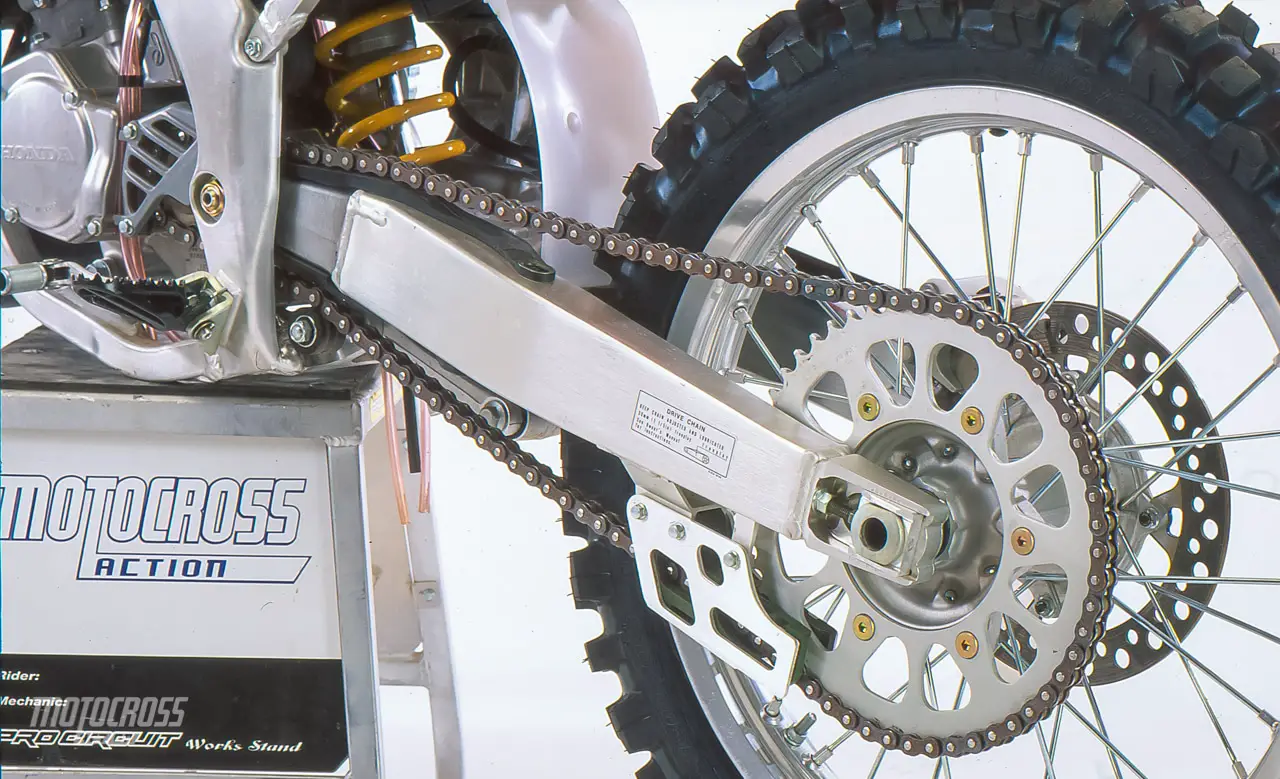
QUESTION TEN: WHAT DO WE REALLY THINK?
Honda has created the perfect package — save for a powerband.






Comments are closed.